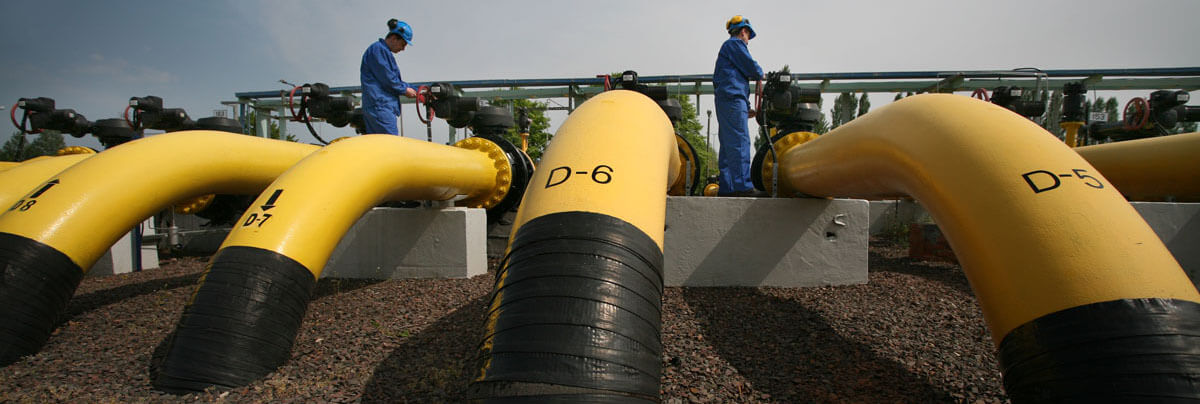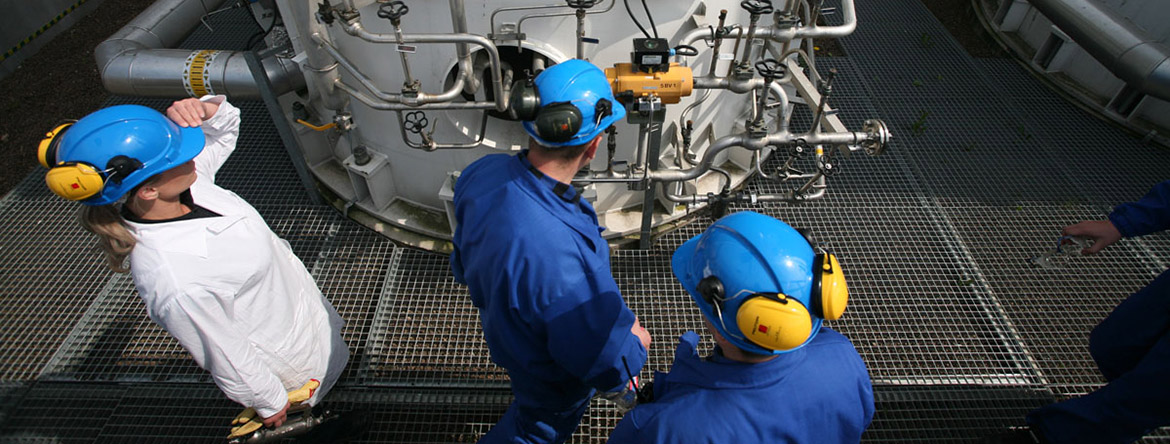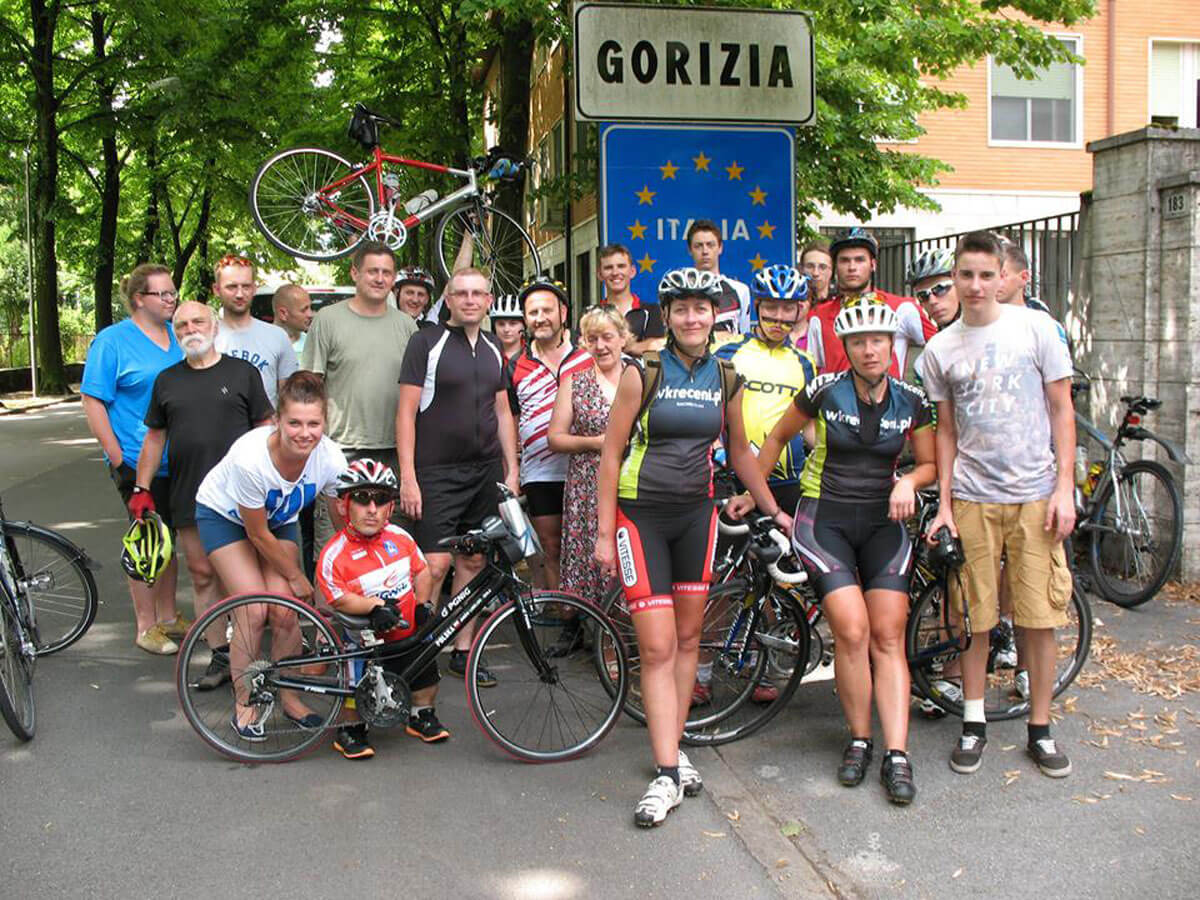Employees are the Group’s most valuable asset − it is thanks to their experience that we remain the market leader. Their commitment drives our growth, enhances the quality of our services, and gives us new areas of business expertise.
The PGNiG Group is one of the largest employers in Poland. It employs individuals with extensive experience and high qualifications, but is also the first employer for many young people. This kind of human capital is our most valuable asset, as it is through our employees that we can provide our customers with the highest quality service, achieve international success and pursue a broad range of investment programmes.
In 2014 the PGNiG Group’s headcount stood at 28,996. This represents a slight fall of 1,934 in employment levels from the Group’s 2013 headcount of 30,930.
Group’s headcount as at the year’s end, by segment
| |
2014 |
2013 |
2012 |
2011 |
2010 |
|
PGNiG Head Office
|
689
|
606
|
617
|
838
|
840
|
|
Exploration and Production
|
10,221
|
10,754
|
10,990
|
12,054
|
11,592
|
|
Trade and Storage
|
3,240
|
3,464
|
3,780
|
3,841
|
3,809
|
|
Distribution
|
12,173
|
13,050
|
13,255
|
13,865
|
13,881
|
|
Generation
|
1,068
|
1,066
|
1,069
|
-
|
-
|
|
Other Activities
|
1,605
|
1,990
|
2,327
|
2,185
|
2,296
|
|
Total
|
28,996
|
30,930
|
32,038
|
32,783
|
32,418
|
Group’s headcount as at the end of 2014
PGNiG Group – the largest employer
The PGNiG Group takes utmost care to fulfil its obligations towards employees and their families. These obligations, related chiefly to social welfare and healthcare, include:
-
Organisation and co-financing of holidays for employees and their children,
-
Financial assistance and material support for families experiencing economic hardship and health problems,
-
Repayable housing assistance,
-
Organisation and co-financing of a wide variety of recreation activities (sports, leisure and cultural activities),
-
Subsidies of private healthcare services for employees and their family members.
Professional advancement
Investment in human resources furthers PGNiG’s plans, but also supports the personal ambitions of employees. As the PGNiG Group’s subsidiaries are engaged in a wide range of business activities, it is up to each of them to determine the type and extent of their staff training.
The training management system plays a vital role in developing human resources. Our employees are given opportunities to improve their professional qualifications through a range of training programmes, postgraduate studies, trade conferences, seminars and symposia, and also through occupational training.
Depending on their respective responsibilities and individual needs, employees can participate in a variety of training courses in all aspects of modern business, including risk management, legal environment analysis and customer service. Training courses that focus on soft skills, such as communication, teamwork, team management and task management, are also an important part of the process.
In addition, courses are conducted to enable the acquisition and development of employees’ practical skills, and the progression of their skills in project and human resources management.
In 2014 the Group ran the second edition of its Project Management Academy. The Project Management Academy was initially designed (2013) to provide general training in project management to a limited group of PGNiG employees. In its second edition, it was meant to raise the project management awareness of PGNiG employees. The initiative was related to another project, consisting in the implementation of a Group-wide management system. In 2014 the second Project Management Academy offered training to 20 employees of the Project Management Office, 40 Project Leaders and 150 project team members. The initiative proved a success, as confirmed by its participants, who claim to have developed a better understanding of team-based project management.
The development of our exploration and production activities will require PGNiG employees to possess skills in conducting discussions and negotiations, and also in establishing long-term relations with local authorities and communities. The training we give our employees is designed to prepare them for such roles.
It is extensive, and furthers the development and enhancement of their professional qualifications, with subsequent benefits to the Group from higher productivity levels. The development of human resources translates into the higher value of the PGNiG Group, which is viewed positively by investors and customers. In turn, it also makes us a more desirable employer to potential newcomers.
Employment restructuring
From January 2009 to 31 December 2014 the Group operated the ‘Programme for Workforce Streamlining and Redundancy Payments to PGNiG Group Employees for 2009–2011 (Stage 3).’ The Programme was operated on a stand-by basis. It could be implemented in extraordinary circumstances and required all companies across the Group to follow a uniform procedure. The redundancy payments under the Programme were financed from PGNiG’s Central Restructuring Fund capital reserve, or other funds established by PGNiG Group companies.
In 2014 the Programme was implemented in one of the group companies, BUD-GAZ P.P.U.H Sp. z o.o. w likwidacji (in liquidation), covering 15 employees. The one-off payments to employees who were made redundant came from PGNiG’s Central Restructuring Fund.
Performance assessment
In 2011 we launched the PGNiG Performance Assessment System, which was developed as part of a broader initiative, the ‘Implementation of the New Group Management Model’, under the ‘PGNiG Group’s Value Based Management (VBM) Programme for 2009-2015.’ In 2012 the Performance Assessment System was modified to bring it more into line with the dynamic situation in the current marketplace. Revisions were made both to the principles of assessment and the software supporting the assessment process, to more effectively support managers in achieving their strategic objectives. An assessment of every Company employee is conducted on a quarterly basis, based on a set of standardised criteria across all branches. In the process, particular emphasis is placed on targets assigned to individual employees, which are also linked to the strategic objectives of the organisation as a whole. During the assessment process, the manager and employee discuss these goals and expectations, and identify areas to work on with the support of a supervisor. This allows employees to discuss the needs and challenges associated with their positions, and is a source of feedback on both their achievements and potential issues in their professional development. Key features of the system implemented at PGNiG are clarity and the transparency of its criteria, simplicity and universality, and the cyclical nature of the assessment process.
In 2013 the Performance Assessment System was again revised. The frequency of assessment was modified and the requirement to assign tasks to additional employees was lifted. At present, the assessment takes place twice a year.
PGNiG’s Performance Assessment System complements its Management By Objectives (MBO) programme for management staff. A comprehensive assessment of how the organisation’s strategic objectives are implemented is also the basis of how employees involved in this process are assessed and remunerated. The System is designed to reinforce a sense of responsibility for the PGNiG Group’s performance among its employees.
Work placements and internships
PGNiG conducts a programme under which it annually offers work placement and internship opportunities to winners of the Grasz o Staż (Win a Work Placement) competition and the Akademia Energii (Energy Academy) project. Since 2015 the PGNiG programme is also addressed to students of the Cracow University of Economics.
In 2012 the Group also launched a training programme for students from technical universities interested in the oil and gas industry. It involves a number of initiatives, including work placements in exploration and production.
While being an attractive way to gain professional experience and new skills and to learn more about working in the industry, the internships offered by PGNiG are also a chance to gain employment with the PGNiG Group. Companies of the PGNiG Group also provide apprenticeships to students and graduates from across Poland.
Recruitment
PGNiG gives preference to internal recruitment, which allows us to make full use of our employees’ potential, and also motivates them to work more productively and develop their skills. External recruitment is carried out only when specialist expertise is needed that is not available in-house.
Recruitment is split into the following stages:
1. Applicant selection – at this stage, the recruitment specialists review submitted job applications to ensure they comply with the requirements of the listed job vacancy.
2. Assessment testing – candidates with suitable professional profiles are then invited to take an assessment test, whose nature depends on the skills required for a given position.
Typical tests include:
-
competency check,
-
on-the-job assessment tasks,
-
language assessment,
-
analytical thinking and logical reasoning,
-
problem-solving.
3. Job interview − candidates who perform well in the testing phase are invited for interview. The interviewers typically question candidates on professional contexts where they have previously used the relevant skills and expertise. This stage is also used to appraise the candidate’s soft skills required in the job. Our competency and behaviour tests are a very useful tool in the assessment process. The interview is also a chance to get to know the candidate, and gives the interviewee the chance to ask questions or clarify doubts related to the future position.
4. Interview with a manager – candidates who reach this stage attend an interview with the manager of the team offering the vacancy. Following this, a final decision is made on one of the candidates.
5. Recruitment closing – all candidates getting to the second and further stages of the recruitment process receive feedback on their performance.
Occupational safety
An employer who conscientiously invests in occupational health and safety knows that by doing so it not only prevents accidents, work-related diseases and major industrial incidents, but also enhances the company’s image with a positive impact on its success.
An employer has a duty to protect the life and health of its employees using the latest in science and technology, in areas such as ergonomics, sociology, psychology, occupational health and general good practice.
The issue of occupational health and safety is a humanitarian as well as an economic one. In the course of their work, employees are exposed to risks arising not only from the work itself, but also from the environment in which they operate. Consequently, better working conditions create the feeling among employees that their work is less arduous, making the working day a more productive one.
However, the most important thing is to assess the gravity of risks to health and life occurring at the workplace and to determine whether sufficient measures are in place to prevent them. For this purpose, we have the tool of workplace risk assessment.
On the basis of the assessment, both protective and preventive measures are taken, ranging from collective and personal protection, the modernisation of plant and equipment, renovation and the modernisation of premises, to specialist training, staff health checkups, the implementation of occupational health and safety management systems, to the development of instructions and procedures, and all for the purpose of eliminating or mitigating risks.
In economic terms, OHS solutions implemented following a risk assessment have a positive effect on diverse elements, such as productivity, output, insurance premiums and workplace accident costs.
Furthermore, OHS activities are not only subject to basic internal regulations, but also to specific laws such as the Geological and Mining Law, the Building Law and also the Act on Mine Rescue Operations, as well as legislation on fire safety, environmental protection and others. Knowledge of these can ensure the best possible working conditions and their continuous improvement.
All these laws and regulations are reflected in the OHS policy work carried out at the PGNiG Group by both the Management Board and individual employees.
In addition, to meet the highest international standards in winning new contracts and business partners, and improving Company ties with foreign entities, the Company has in place the HSE (Health, Safety and Environment) Operator System. The system safeguards the health of workers, ensures safe working conditions, and helps protect the environment. Although there is no legal obligation to implement the HSE System, PGNiG has done so voluntarily beyond its obligations and duties. In 2014 PGNiG took another step in this direction by starting work on a Company-wide uniform and integrated Quality, Health, Safety and Environment (QHSE) Management System, with a view to maintaining the highest level of safety of the employees, local communities and the environment through carrying out its operations in a safe manner and with all risks minimised. The relevant proposal was to be discussed at a meeting of the PGNiG Management Board in December 2014.
Code of Ethics and activities of the Ethics Officer
The values we recognised as fundamental when developing the Code of Ethics for PGNiG Employees several years ago included credibility, accountability, partnership and quality. These values have always been cherished by PGNiG’s employees, as they form an integral part of the miners’ ethos that has shaped our tradition and continues to be a valued part of PGNiG’s activities. The Code of Ethics, forming an element of a wider ethics programme, defines specific rules of conduct to be followed by employees; rules that are implied by the values we have embraced and follow the industry’s global best practice.
As a result of consultations, we also developed the Code of Responsible Gas and Oil Production, promoting dialogue with local communities in areas where we begin or intend to begin our exploration and production projects.
Several years ago, we put in place the Ethics Programme Management System and appointed the Ethics Committee consisting of key department heads involved in the implementation of standards of ethical conduct. Meetings of the Ethics Committee are held at least twice a year. The PGNiG Group companies have also adopted their own codes and appointed their ethics officers.
The ‘ethics hotline’, operated by the Ethics Officer, is a platform for reporting violations and clarifying doubts as to the adopted rules and standards of conduct. Apart from the dedicated telephone line, every employee may submit reports to an email box, also anonymously. The ethics programme provides for detailed organisational solutions and procedures. A number of instruments supporting the ethics infrastructure have also been implemented. In addition, employees are offered such tools for discussion as a blog, where new entries on ethical issues are regularly added.
The Ethics Programme Management System is an important element of the process of building a sustainable and competitive business, ensuring market success as well as personal development and the satisfaction of employees.
Sports and recreation activities
For the last eleven years, the Sportgas Oil and Gas Association for Sport and Tourism has been actively involved in initiatives to promote sports and physical activity. Comprising a growing number of disciplines (including tennis, football, badminton, shooting, volleyball, bridge, basketball, squash and running), the Association organises professional games and tournaments, as well as special shows. What is more, the Association is open not only to PGNiG Group employees, but to other people working in the energy sector, which makes the sports rivalry more exciting.
In 2014 over 300 Sportgas members were able to develop their skills and interests through a number of initiatives promoting a healthy lifestyle and fair play. Along the way, its members and teams won various sports competitions, including the prestigious tennis business league, as well as the highest individual and team trophies in the Gas Industry Tennis Championships of Poland. They also proudly represented Sportgas and won other important contests in badminton, bridge, football and running. For more information see www.sportgas.pl.
Internal communications
The goal of internal communications at the PGNiG Group is to foster a sense of true identification with the Group’s strategic objectives among the employees, satisfaction with their work for the Group and active participation in pursuing the Group’s objectives. Team spirit and cooperation between PGNiG Group employees are essential for the productivity and quality of their work.
The everyday work of the Group’s employees is supported by both traditional and electronic means of communication. As part of our communication initiatives, employees receive a daily online newsletter highlighting the most important developments in the PGNiG Group, as well as ‘MAGAZYN’, a bi-monthly internal bulletin devoted to key Group developments and investments, organised into thematic sections.
For a couple of years now, an information system has been in place based on ‘communicators’ – individuals responsible for disseminating information to employees across the Group.
Further, an annual CSR Report is published, providing a complete overview of the Group’s initiatives in the area of corporate social responsibility.
Our intranet site – PGNiG Info – is always up-to-date on Company matters and is an essential source of data and services for personnel using the PGNiG network. Through our corporate intranet, employees can communicate with each other on different authorisation levels and access important information on their work. PGNiG’s intranet also features Outlook − an instant messaging service for the rapid exchange of information. Outlook means users can communicate with each other in real time across the whole network. It is a tool for use in group meetings, conference calls and collaborative projects in teams working together around the Company. The intranet also has its own search engine speeding access to information and providing a search facility on corporate website documents and data, and on the Web as a whole. Interestingly, employees can, according to need and preference, use dedicated online tools to access their branch portals or the Outlook email, view the Company calendar and access the Outlook platform. There is also a bulletin board that can be used, for example, to announce any items the employees wish to buy, sell or exchange. The system of internal communications within the Group, including the intranet, is undergoing constant upgrades.






